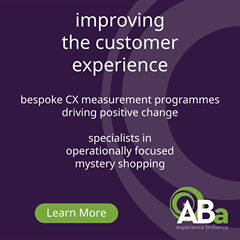Q&A: Alex Hooper – Co-founder and CTO, Flare
Alex Hooper is the co-founder and CTO of Flare. He’s a self-taught software engineer and before Flare led engineering teams at prominent fintech startups across the UK.
Can you tell us a bit about your background?
I started my e-commerce journey back in my university dorm room over a decade ago, selling t-shirts from businesses that, well, didn’t quite make it! I had to learn to code to set up my websites, and I really got hooked on turning code into something tangible. Despite having a degree in Geography, I threw myself into the tech world, securing a junior software engineer role in London. Five years later, I was leading a team at a prominent London fintech, developing embedded finance products.
Right after COVID hit, I made the bold move to leave my job to start something new. I joined Europe’s leading startup accelerator, Entrepreneur First, where I met my co-founder, Daniel Parekh-Hill. Daniel had been working with large retailers on demand forecasting and saw firsthand the issues with businesses relying solely on historical data. We wondered: What if we could create future demand by giving shoppers the ability to schedule orders for future delivery – giving retailers the future order data they need to better manage their inventory and make more money.
We talked to numerous retailers across various sectors—Homeware, Baby, Jewellery, F&B. Many were juggling scheduled deliveries manually or had tried using mismatched tools, which just didn’t work. Others had spent a fortune on custom solutions. So, Dan and I built Flare—a system that not only makes scheduled delivery seamless but also boosts revenue and customer satisfaction.
What does your company do? / What is your USP?
Flare enables customers to schedule their purchases for future delivery, directly boosting brand revenue by converting more browsers into buyers. This approach tackles common sales blockers like timing and storage, allowing customers to commit to a purchase now and receive their products when it suits them best. Our platform not only simplifies operations for retailers but also opens up a new market segment of planners who appreciate the flexibility and foresight that being able to schedule delivery offers.
What’s special about the platform and your approach?
Flare stands out by enabling retailers to offer incentives for customers who plan their purchases ahead of time. Much like how airlines offer different prices for different dates – we’ve taken this approach and applied it to shopping. This allows businesses to set up specific discounts based on the delivery date a customer chooses. It’s a win-win: customers get rewarded for their foresight, and retailers can align demand with their production and inventory needs more effectively. This approach drives sales and enhances customer loyalty by acknowledging and rewarding planning behaviour.
What advantage does it add?
For customers, buying now often doesn’t suit large or timed purchases—like buying a sofa for a new home or preparing for a new baby. Scheduled delivery secures these sales by allowing customers to plan purchases for when they’re ready, tackling common obstacles like space and timing.
For retailers, it converts potential lost sales into revenue by giving customers the flexibility they need to commit on the spot, increasing revenue from 5-29%.
How does a product/service implementation actually look like and how do you measure success?
If you’re on Shopify, installing Flare is a breeze – we’re on The Shopify App Store. Once installed, you can use our high-converting UI blocks right in your existing Shopify theme. Setup includes automatic connections to your ERP and WMS. Most clients see their first new sales within hours of going live. And the best bit? Flare usually pays for itself in just one or two orders.
How are retailers using your systems to gain competitive advantage and what does best practice look like? Can you share a case study with us?
Scheduled delivery is a game-changer for sectors where buyers need to consider timing and storage. By removing these blockers, we boost conversion rates significantly.
We recently worked with a leading UK luggage brand, Portable Porters. They noticed that customers were interested to buy but often left their site to buy luggage elsewhere closer to their travel dates due to lack of storage space at the time. We helped them implement the “Order for Later” feature, allowing customers to buy immediately but choose a future delivery date. This integration took just over an hour and led to a 74% increase in conversion rates within four weeks.
Are there other companies you partner with?
We work hand-in-hand with Shopify and have a Shopify App available for Shopify merchants to use today.
We’re also partnered with most major ERPs, WMS and 3PLs to ensure that most if not all retailers can take advantage of the power of scheduled delivery without having to worry about the operational side of things.
What challenges and opportunities do you see in UK retail for 2024 / What challenges are retailers facing in 2024?
It’s really tough for retailers out there at the moment. Just last week, I was at the Retail Technology Show and the overwhelming feeling is that the days of piling cash into ad spend and reaping the rewards is over. Similarly – relying on organic traffic is a roll of the dice, as google changes their algorithm overnight and retailers wave goodbye to 40% of traffic in the click of a finger.
Businesses are going to need to squeeze as much conversion rate out of their traffic as they can to get the most out of that ad spend. But they need to do this in a way that doesn’t harm their bottom line – so resorting to tactics like 24/7 sales with deep discounts isn’t an option.
How will you address these challenges and turn them into successes?
I’m not one for a hard sell, but scheduled delivery can really help here for the right kind of brand (Homeware, Maternity, F&B, Jewellery) – maximising conversion rates by giving customers the freedom to choose when their orders are shipped. This flexibility addresses traditional purchase barriers such as space, timing, and budget. By offering this, retailers convert more of their existing traffic into sales. This strategy is about optimising what you already have—making sure that every visitor to your site has the best chance to become a customer.
What is on the horizon for you as a company?
I’m so excited about 2024 – For context, we spent the second half of last year building out and refining our beta product with some amazing design partners – which put us in a great place to launch on the Shopify App Store earlier this year.
Now we’ve got a brilliant base product in place providing a seamless scheduled delivery system that’s making retailers money and massively improving the experience for their customers. We’re now looking at how we can make Flare even better for both…
A sneak peak of a highly requested feature we’re working on is the the ability to help customers split the cost of their purchases over the period leading up to delivery in a way that doesn’t involve credit (We’re not big fans of Buy Now, Pay Later), to make the experience even better for customers, breaking down what can be an expensive item into affordable chunks, without dragging customers into debt – reducing the barrier to purchase and making retailers even more money in a sustainable way.
Any final thoughts?
I Just wanted to say a big thank you to the entire team at The Retail Bulletin for speaking to me today – it was a pleasure!
If you’d like to start a conversation with Flare and find out how they can help your retail operations, visit them online here or connect with them here.














